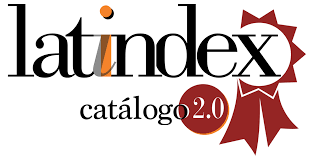La gestión comunicativa de las empresas vitivinícolas de España en las principales redes sociales / Communication management of Spanish wine companies in the main social networks
DOI:
https://doi.org/10.5783/revrrpp.v9i18.617Keywords:
Relaciones Públicas, Comunicación Digital, Sector Vitivinícola, Internet, Redes SocialesAbstract
Las redes sociales se han convertido en herramientas claves para la comunicación de las organizaciones, especialmente en el sector vitivinícola de España. Las redes sociales permiten aumentar la visibilidad, a la vez que establecer y reforzar las relaciones con los públicos, siempre y cuando sean gestionadas profesionalmente. Así, este estudio tiene como objetivo evaluar la presencia y actividad de las empresas vitivinícolas de España en las principales redes sociales (Facebook, Instagram, Twitter y YouTube). Para esta investigación se analizaron las 1.656 empresas vitivinícolas con mayor facturación de España. Los resultados exponen que las empresas tienen una presencia mayoritaria, pero su actividad es poco frecuente. Teniendo en cuenta que la gran mayoría de las empresas llevan entre 4 y 9 años utilizando las redes sociales, la presencia poco activa parece repercutir directamente en la media baja de seguidores que tienen las empresas.
Palabras clave: relaciones públicas, comunicación digital, sector vitivinícola, Internet, redes sociales
Abstract
Social networks have become key tools for organizational communication in the Spanish wine sector. The popularity that the sector is obtaining has generated the need to carry out digital public relations strategies by companies. Social networks allow increasing visibility and establishing relationships with audiences if they are managed professionally. Maintaining an active presence in social networks allows wine companies to know the opinions and preferences of stakeholders, as well as obtain notoriety and manage the digital reputation. Thus, the purpose of this study is to analyze the presence and activity of wine companies in Spain through the main social networks (Facebook, Instagram, Twitter, and YouTube). For this research, 1,656 wine companies with the highest turnover in Spain were analyzed: 33 corporate, 218 large, 517 medium and 888 small. Results exposed that companies have a majority presence in the main social networks, but their activity is low. Facebook is the social network most chosen by companies for communication with their stakeholders and Instagram, Twitter, and YouTube are the least chosen. However, the frequency of company publications is so far from the frequency recommended by experts. Spanish wine companies have an inactive presence in social networks and they bet in social networks where there is a greater penetration (ELOGIA, 2018; Kemp, 2018). Taking into account that the majority of companies have been using social networks for 4 to 9 years, low active presence seems to have an impact on the low media of companies’ followers. This implies the necessity to reflect on public relations management in social networks by companies. They are limiting the possibilities offered by platforms not only to increase digital visibility but also to share organizational activities. Having a presence with a low level of activity in social networks is the same as having a rudimentary, careless, and unprofessional presence. This could affect the notoriety and digital reputation of companies. Comparing this research with other studies applied to other wine companies in countries such as Germany, the United States, Australia, and New Zealand, the use of social networks without a defined communication strategy was observed (Szolnoki et al., 2018). The sector recognizes the power of social networks but is not making proper use of the platforms. Finally, this study is presented through a specific methodology for the analysis of communication management in social networks and has been adapted to a specific object (Spanish wine companies). As future research lines, the study of Spanish wine companies in social networks would be advanced. This involves the analysis of content management and interaction management in social networks.
Keywords: public relations, digital communication, wine sector, Internet, social networks
Downloads
References
Aced-Toledano, C., & Lalueza, F. (2016) ¿Qué contenidos publican las empresas en los medios sociales? Análisis crítico del discurso de las compañías del IBEX 35 y del Fortune 500 en blogs corporativos, Facebook y Twitter. Revista Internacional de Relaciones Públicas, VI(8), 135-154. http://dx.doi.org/10.5783/RIRP11-2016-08-135-154.
Alimarket. (2018). Los españoles aún gastan más en vino que en cerveza. Recuperado de https://www.alimarket.es/alimentacion/noticia/287910/los-espanoles-aun-gastan-mas-en-vino-que-en-cerveza
Boyd, M. S. (2014). (New) participatory framework on YouTube? Commenter interaction in US political speeches. Journal of Pragmatics, 72, 46-58. https://doi.org/10.1016/j.pragma.2014.03.002
Busto-Salinas, L. (2019). Sanidad y redes sociales: ¿qué entidades son más activas y con cuáles interactúa más el público? El Profesional de la Información, 28(2), 1-10. https://doi.org/10.3145/epi.2019.mar.15
Capriotti, P., & Ruesja, L. (2018). How CEOs use Twitter : A comparative analysis of Global and Latin American companies. International Journal of Information Management, 39(September 2017), 242-248. https://doi.org/10.1016/j.ijinfomgt.2018.01.003
Cho, M., Furey, L., & Mohr, T. (2016). Communicating Corporate Social Responsibility on Social Media: Strategies, Stakeholders, and Public Engagement on Corporate Facebook. Business and Professional Communication Quarterly, 80(1), 52-69. https://doi.org/10.1177/2329490616663708
Cho, M., Schweickart, T., & Haase, A. (2014). Public engagement with nonprofit organizations on Facebook. Public Relations Review, 40(3), 565-567. https://doi.org/10.1016/j.pubrev.2014.01.008
Chu, S. (2011). Viral Advertising in Social Media : Participation in Facebook Groups and Responses Among College-Aged Users. Journal of Interactive Advertising, 12(1), 30-43. https://doi.org/10.1080/15252019.2011.10722189
Claes, F., & Deltell, L. (2013). Museos Sociales. Perfiles Museísticos en Twitter y Facebook 2012-2013. El Profesional de la Información, 23(6), 594-602. https://doi.org/10.3145/epi.2014.nov.06
Cohen, D. (2015). REPORT: How Many Posts per Week Should Facebook Pages Average? – Adweek. Recuperado 22 de mayo de 2017, de http://www.adweek.com/digital/report-locowise-posts-per-week-pages/
El Economista. (s. f.). Ranking de Empresas del sector Elaboración de vinos.
ELOGIA. (2018). Estudio Anual de Redes Sociales IAB 2018. Recuperado de https://iabspain.es/wp-content/uploads/estudio-redes-sociales-2018_vreducida.pdf
Iñigo, M., José Hierro, J., & Xancó, S. (2018). Panorama actual y perspectivas del sector vitivinícola 2017. Análisis internacional, nacional y por autonomías de perfiles de consumidor español. Recuperado de http://marketing.eae.es/prensa/SRC_Vitivinicola.pdf
Jordan, R. (2017). How Frequently Should I Post to Facebook? — Rachel B Jordan. Recuperado 21 de junio de 2017, de http://www.rachelbjordan.com/marketing-leadership-blog/how-frequently-should-i-post-to-facebook
Kemp, S. (2018). DIGITAL IN 2018: WORLD’S INTERNET USERS PASS THE 4 BILLION MARK. Recuperado 20 de mayo de 2018, de https://wearesocial.com/blog/2018/01/global-digital-report-2018
Losada-Díaz, J. C., & Capriotti, P. (2015). La comunicación de los museos de arte en Facebook: comparación entre las principales instituciones internacionales y españolas. Palabra Clave, 18(3), 889-904. https://doi.org/10.5294/pacla.2015.18.3.11
Madden, M., Lenhart, A., Cortesi, S., Gasser, U., Duggan, M., Smith, A., & Beaton, M. (2013). Teens, Social Media, and Privacy. Washington, D.C.: Pew Research Center.
Mander, J. (2016). GWI SOCIAL SUMMARY: Global WebIndex´s quaterly report on the latest trends in social networking. Recuperado 24 de junio de 2016, de http://www.globalwebindex.net/hubfs/GWI_Social_-_Q2_2016_Summary.pdf?t=1467106999259&utm_campaign=Insight+Reports&utm_source=hs_automation&utm_medium=email&utm_content=22078263&_hsenc=p2ANqtz--AonKpQ8d8U0jAEwDhaAjZp03jSIqgNfs49heYCeEwyJNKmBJnCeH9BwBJM8TXV
Marcelino Mercedes, G. V. (2015). Migración de los jóvenes españoles en redes sociales, de Tuenti a Facebook y de Facebook a Instagram. La segunda migración. Revista ICONO14. Revista científica de Comunicación y Tecnologías emergentes, 13(2), 48. https://doi.org/10.7195/ri14.v13i2.821
Myers, L. (2019). How Often To Post On Social Media: 2019 Success Guide. Recuperado 15 de mayo de 2019, de https://louisem.com/144557/often-post-social-media
Neill, M. S., & Moody, M. (2015). Who is responsible for what? Examining strategic roles in social media management. Public Relations Review, 41(1), 109-118. https://doi.org/10.1016/j.pubrev.2014.10.014
O’Reilly, T. (2005). What Is Web 2.0 Design Patterns and Business Models for the Next Generation of Software. O´Reilly, 1-27. https://doi.org/10.2139/ssrn.1008839
Oliveira, A., & Huertas-Roig, A. (2018). La comunicación de crisis de Barcelona tras el atentado terrorista. Revista Internacional de Relaciones Públicas, VIII(15). https://doi.org/10.5783/RIRP-15-2018-02-05-22
Oliveira, A., & Huertas-Roig, A. (2019). How do destinations use twitter to recover their images after a terrorist attack? Journal of Destination Marketing and Management, 12(April 2018), 46-54. https://doi.org/10.1016/j.jdmm.2019.03.002
Patel, N. (2016). How Frequently You Should Post on Social Media According to the Pros. Recuperado 21 de junio de 2017, de https://www.forbes.com/sites/neilpatel/2016/09/12/how-frequently-you-should-post-on-social-media-according-to-the-pros/#4356de7e240f
Quintly. (2016). Brand Study H1 2016: How do 30 of the biggest brands use Facebook? Recuperado de https://www.quintly.com/blog/2016/10/30-biggest-brands-on-facebook-analyzed-in-depth/
Rodríguez Fernández, Ó. (2012). Facebook. Aplicaciones profesionales y de empresa. (A. Multimedia, Ed.). Madrid: Anaya Multimedia.
Safko, L., & Brake, D. K. (2009). The Social media bible : tactics, tools, and strategies for business success. New Jersey: Wiley.
Sánchez, M. (2017). Balance del vino en 2018: tendencias y hábitos de consumo. Recuperado de https://sobremesa.es/not/3294/balance-del-vino-en-2018-tendencias-y-habitos-de-consumo-/
Schivinski, B., & Dabrowski, D. (2015). The impact of brand communication on brand equity through Facebook. Journal of Research in Interactive Marketing, 9(1), 31-53. https://doi.org/10.1108/JRIM-02-2014-0007
Shane, D. (2018). How Often You Should Post on Social Media, According to 10 Studies. Recuperado 10 de mayo de 2019, de https://www.inc.com/dakota-shane/how-often-you-should-post-on-social-media-according-to-10-studies.html
Social Report. (2018). How Often Should You Post On Social Media? Recuperado 10 de mayo de 2019, de https://es.socialreport.com/insights/article/115003574046-How-Often-Should-You-Post-On-Social-Media-
Szolnoki, G., Dolan, R., Forbes, S., Thach, L., & Goodman, S. (2018). Using social media for consumer interaction: An international comparison of winery adoption and activity. Wine Economics and Policy, 7(2), 109-119. https://doi.org/10.1016/j.wep.2018.07.001
TecnoVino. (2018). Nuevo récord de la producción mundial de vino en 2018 : Tecnovino. Recuperado de http://www.tecnovino.com/record-de-la-produccion-mundial-de-vino-en-2018-una-de-las-mas-altas-desde-el-ano-2000/
Waters, R. D., Burnett, E., Lamm, A., & Lucas, J. (2009). Engaging stakeholders through social networking: How nonprofit organizations are using Facebook. Public Relations Review, 35(2), 102-106. https://doi.org/10.1016/j.pubrev.2009.01.006
Zeler, I., & Capriotti, P. (2017). Facebook como herramienta de Relaciones Públicas en las empresas: Información de negocios y de RSE en las empresas con mejor reputación a nivel mundial. Revista Internacional de Relaciones Públicas, VII(14), 145-164. https://doi.org/10.5783/RIRP-14-2017-09-145-164
Zeler, I., & Capriotti, P. (2018). Gestión interactiva de la comunicación de la RSE de las empresas de Argentina en Facebook. Retos, 8(16), 7-18. https://doi.org/10.17163/ret.n16.2018.01
Downloads
Published
How to Cite
Issue
Section
License
Authors publishing in this journal agree to the following terms:
a. Authors retain copyright and grant the journal the right to be the first publication of the work as licensed under a Creative Commons Attribution License that allows others to share the work with an acknowledgement of authorship of the work and initial publication in this journal.
b. Authors may separately enter into additional arrangements for non-exclusive distribution of the version of the work published in the journal (e.g., placing it in an institutional repository or publishing it in a book), with an acknowledgement of initial publication in this journal.
c. Authors are allowed and encouraged to disseminate their work electronically (e.g. in institutional repositories or on their own website) before and during the submission process, as it can lead to productive exchanges, as well as earlier and higher citation of published work (see The Effect of Open Access).




